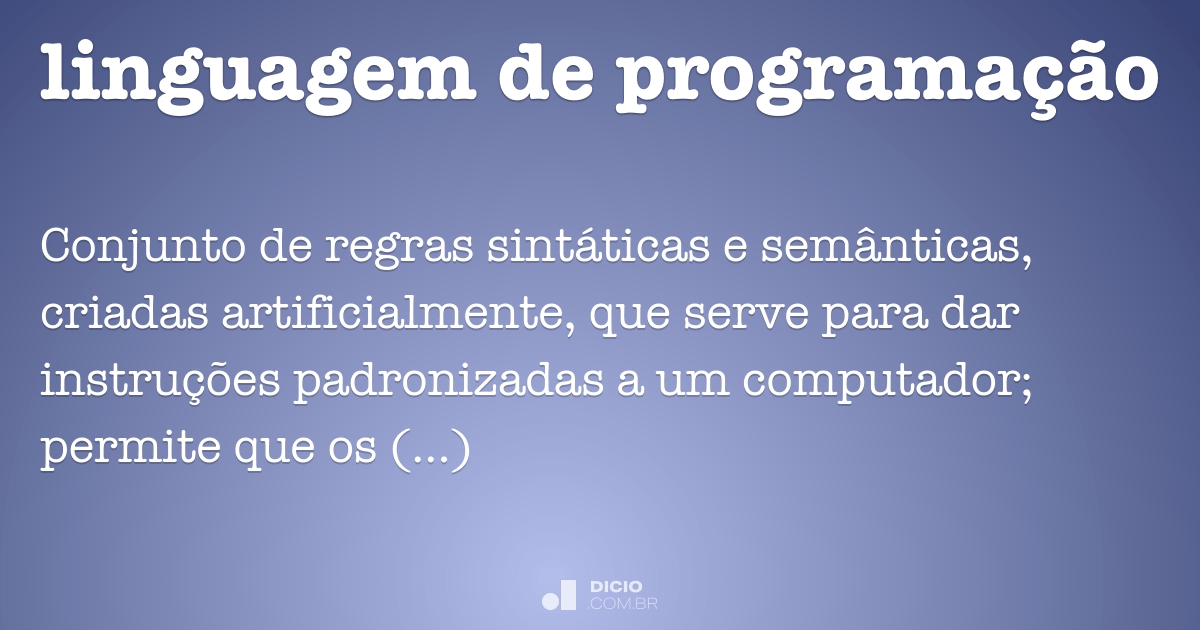The C4 model is an "abstraction-first" approach to diagramming software architecture, based upon abstractions that reflect how software architects and developers think about and build software. The small set of abstractions and diagram types makes the C4 model easy to learn and use. Please note that you don't need to use all 4 levels of diagram; only those that add value - the System Context and Container diagrams are sufficient for many software development teams. For the single-table syntax, the UPDATE statement updates columns of existing rows in the named table with new values.
The SET clause indicates which columns to modify and the values they should be given. Each value can be given as an expression, or the keyword DEFAULT to set a column explicitly to its default value. The WHERE clause, if given, specifies the conditions that identify which rows to update. If the ORDER BY clause is specified, the rows are updated in the order that is specified. The LIMIT clause places a limit on the number of rows that can be updated. Various parts of SQL queries aren't legal locations for the use of bind variables, such as the names of tables or columns, and the sort order indicator .
In such situations, input validation or query redesign is the most appropriate defense. For the names of tables or columns, ideally those values come from the code, and not from user parameters. In SQL, sometimes we need to update multiple records in a single query. For this, we use 2 kinds of examples i.e. the first based on only one condition and the second based on multiple conditions. For this article, we will be using the Microsoft SQL Server as our database and Select keyword. SQL Server 2005 introduced the OUTPUT clause that I appreciate and want to demonstrate.
We can use this clause to capture values from inserted and deleted virtual tables. Previously this data was only available through triggers. So Output returns information based on each rows affected by an INSERT, UPDATE, DELETE, or MERGE statement.
These results can be returned as confirm message or can be inserted to other table or table variables according to the requirements. We were achieving this looping through or temporarily altering the target table. In order get values back from the database, a bind variable must be created using Cursor.arrayvar().
The first parameter to this method is a Python type that cx_Oracle knows how to handle or one of the cx_Oracle DB API Types. The second parameter is the maximum number of elements that the array can hold or an array providing the value . The final parameter is optional and only used for strings and bytes. It identifies the maximum length of the strings and bytes that can be stored in the array.
The optional RETURNING clause causes UPDATE to compute and return value based on each row actually updated. Any expression using the table's columns, and/or columns of other tables mentioned in FROM, can be computed. The new (post-update) values of the table's columns are used. The syntax of the RETURNING list is identical to that of the output list of SELECT. When a database receives a SQL statement, it determines if the statement has already been executed and stored in memory.
If the statement does exist in memory, Oracle Database can reuse it and skip the task of parsing and optimizing the statement. Using bind variables makes the statement reusable with different input values. Using bind variables also improves query performance in the database, eliminates the need for special handling of literal quotation marks in the input, and protects against SQL injection attacks. Abandoning these modelling languages is one thing but, perhaps in the race for agility, many software development teams have lost the ability to communicate visually.
Look at the FROM clause of the above mentioned SQL, it has nodes() function taking target element path starting from root element, from where data is to be read. The nodes() function returns a row set that contains logical copies of XML data. Using value() function, you can retrieve multiple values from the row set. The value() function takes two parameters, first would be attribute name prefixed by "@" and the second would be SQL Server data type to convert that value. We need the data type conversion because all attribute values are considered as string. The query returns a result set by combining column values of both tables T1 and T2 based on the join predicate.
It compares each row of table T1 with rows of table T2 to find all pairs of rows that satisfy the join predicate. Whenever the join predicate is satisfied by matching non-NULL values, column values for each matching pair of rows of T1 and T2 tables are combined into a row in the result set. The use of prepared statements with variable binding is how all developers should first be taught how to write database queries. They are simple to write, and easier to understand than dynamic queries. Parameterized queries force the developer to first define all the SQL code, and then pass in each parameter to the query later.
This coding style allows the database to distinguish between code and data, regardless of what user input is supplied. Use the SELECT FOR UPDATE statement in scenarios where a transaction performs a read and then updates the row it just read. The statement orders transactions by controlling concurrent access to one or more rows of a table. It works by locking the rows returned by a selection query, such that other transactions trying to access those rows are forced to wait for the transaction that locked the rows to finish. These other transactions are effectively put into a queue that is ordered based on when they try to read the value of the locked row. To bulk-insert data into an existing table, batch multiple rows in one multi-row INSERT statement.
Experimentally determine the optimal batch size for your application by monitoring the performance for different batch sizes . Do not include bulk INSERT statements within an explicit transaction. The C4 model is an easy to learn, developer friendly approach to software architecture diagramming. Let's assume that we have a sample table with five columns and three of them have a DATETIME data type. Data in this table is updated from three applications and the update data for each application is stored correspondingly in columns UpdateByApp1Date, UpdateByApp2Date, UpdateByApp3Date. Here is code to build the table and add some sample data.
Column values on multiple rows can be updated in a single UPDATE statement if the condition specified in WHERE clause matches multiple rows. In this case, the SET clause will be applied to all the matched rows. This article would also be helpful where an application works in disconnected environment. A user can save data in a disconnected environment using either of these two approaches. When the user will be online or connected to database and wants to update the modified records, all that data can be passed to the database for updating using either a delimited string or an XML.
Run statement brings your query results to a grid with a single fetch. The user sees 50, 100, 500, etc rows come back, but SQL Developer and the database know that there are more rows waiting to be retrieved. The process on the server that was used to execute the query is still hanging around too. Every query ran will come back with the first 500 rows, and rows will be continued to be fetched in 500 row increments. You'll then see most of your ad hoc queries complete with a single fetch. The query compares each row in the orders table with rows in the order_items table.
When rows from both tables have the same values in the order_id columns, the query combines column values from rows of both tables into a result row and include it in the result set. An SQL UPDATE statement changes the data of one or more records in a table. Either all the rows can be updated, or a subset may be chosen using a condition. For more information please see the Input Validation Cheat Sheet. Validated data is not necessarily safe to insert into SQL queries via string building.
This technique is to escape user input before putting it in a query. It's usually only recommended to retrofit legacy code when implementing input validation isn't cost effective. They require the developer to just build SQL statements with parameters which are automatically parameterized unless the developer does something largely out of the norm.
The difference between prepared statements and stored procedures is that the SQL code for a stored procedure is defined and stored in the database itself, and then called from the application. Both of these techniques have the same effectiveness in preventing SQL injection so your organization should choose which approach makes the most sense for you. The following example specifies how to update multiple columns in a table. In this example, two columns supplier_name and supplier_address is updated by a single statement. We can use the Update statement with Left Join as well, and it updates the records with NULL values. As highlighted earlier, we cannot use a single Update statement for updating multiple columns from different tables.
For partitioned tables, both the single-single and multiple-table forms of this statement support the use of a PARTITION clause as part of a table reference. This option takes a list of one or more partitions or subpartitions . Only the partitions listed are checked for matches, and a row that is not in any of these partitions or subpartitions is not updated, whether it satisfies the where_condition or not. When a table is created, all columns are stored as a single column family. This default approach ensures efficient key-value storage and performance in most cases. However, when frequently updated columns are grouped with seldom updated columns, the seldom updated columns are nonetheless rewritten on every update.
Especially when the seldom updated columns are large, it's therefore more performant to assign them to a distinct column family. To update multiple columns use the SET clause to specify additional columns. Just like with the single columns you specify a column and its new value, then another set of column and values. In the try block of the connect_Click() method, change the SQL query to return a multiple row result set and add a while loop to enclose the read method that displays the department names. One approach to dealing with this is to not show all of the components on a single diagram, and instead create multiple diagrams, one per "slice" through the container . This approach can certainly help, but it's worth asking whether the resulting diagrams are useful.
Are you going to use them and, if so, what are you going to use them for? With modelling, you're building up a non-visual model of something (e.g. the software architecture of a software system), and then creating different views (e.g. diagrams) on top of that model. This requires a little more rigour, but the result is a single definition of all elements and the relationships between them. This, in turn, allows modelling tools to understand the semantics of what you're trying to do, and provide additional intelligence on top of the model. It also allows modelling tools to provide alternative visualisations, often automatically. We have all faced this problem while designing our applications using Microsoft SQL Server 2005, when we want to send multiple rows to be modified to the database.
We already know how to return a set of rows from the database to application, but we do not have any feature provided till the SQL Server 2005, to send multiple rows to the database. In the article, I will walk you through how to use the DELETE query and WHERE clause to delete rows. I will also show you how to delete multiple rows from a table at once.
In the above example, since the WHERE clause matches only one row, the output contains a single item in the list. If the WHERE clause matched multiple rows, however, the output would contain as many items as there were rows that were updated. We can insert multiple records from c# to sql in a single time. When using FROM, one should ensure that the join produces at most one output row for each row to be modified.
In other words, a target row shouldn't join to more than one row from the other table. If it does, then only one of the join rows will be used to update the target row, but which one will be used is not readily predictable. In rare circumstances, prepared statements can harm performance. Though an update statement modifies column data from many sources, such as literal values or other query results, the basic format is the same. In this article, we will see, how to update multiple columns in a single statement in SQL.
We can update multiple columns by specifying multiple columns after the SET command in the UPDATE statement. The UPDATE statement is always followed by the SET command, it specifies the column where the update is required. Expression1, expression2 These are the new values to assign to the column1, column2. So column1 would be assigned the value of expression1, column2 would be assigned the value of expression2, and so on. The conditions that must be met for the update to execute.
If no conditions are provided, then all records in the table will be updated. A deployment diagram allows you to illustrate how software systems and/or containers in the static model are mapped to infrastructure. This deployment diagram is based upon a UML deployment diagram, although simplified slightly to show the mapping between containers and deployment nodes. It's a way to create maps of your code, at various levels of detail, in the same way you would use something like Google Maps to zoom in and out of an area you are interested in. In SQL Server we can find the maximum or minimum value from different columns of the same data type using different methods.
As we can see the first solution in our article is the best in performance and it also has relatively compact code. Please consider these evaluations and comparisons are estimates, the performance you will see depends on table structure, indexes on columns, etc. Clause to obtain sums, counts, and so on of columns in multiple rows changed by the DML statement. In this article, we discussed how to parse a delimited string in SQL Server 2005, using the two table valued function implementations, without writing an explicit loop statement.
We also discussed CTEs , one of the nicest feature of the SQL Server 2005 and the XQuery functions and how to convert an XML into a table using them. In our sample SP, we have employee names and their salaries in two different delimited strings, which need to be parsed. To invoke these two functions, we create an SP which takes multiple delimited strings and a delimiter as input.
This SP will call one of the two table valued functions, which would in turn convert the delimited string into a table. In this approach, we send a delimited string of data corresponding to each column of a table, to a Stored Procedure from the application layer. The SP should then have functionality to parse the delimited string to extract the data values and then modify the record.
One way we can delete multiple rows from our cats table is to change the condition from id to gender. The examples shown above have all supplied data to the database and are therefore classified as IN bind variables. In order to have the database return data to the caller, a variable must be created.
This is done by calling the method Cursor.var(), which identifies the type of data that will be found in that bind variable and its maximum size among other things. Bind variables reduce parsing and execution costs when statements are executed more than once with different data values. If you do not use bind variables, Oracle must reparse and cache multiple statements. When using bind variables, Oracle Database may be able to reuse the statement execution plan and context. The VALUES() function can only be used in a ON DUPLICATE KEY UPDATE clause and has no meaning in any other context.





























